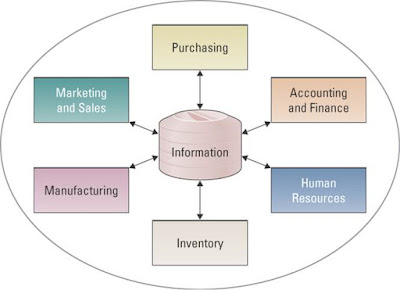MGT 300 CHAPTER 10 : EXTENDING THE ORGANIZATION SUPPLY CHAIN MANAGEMENT
LEARNING OUTCOMES :






- List and describe the components of a typical supply chain
- Define the relationship between decision making and supply chains management
- Describe the four changes resulting from advance in IT that are driving supply chains
- Summarize the best practices for implementing a successful supply chain management system
- BASICS OF SUPPLY CHAIN
-Supply chain has three main links :
*Materials flow from suppliers and their upstream suppliers at all levels
*Transformation of materials into semi finished and finished products through the organization's own production process.
*Distribution of products to customers and their downstream customers at all levels
-Organizations must embrace technologies that can effectively manage supply chains


- INFORMATION TECHNOLOGY'S ROLE IN THE SUPPLY CHAIN

- VISIBILITY
-Supply chain visibility is the ability to view all areas up and down the supply chain. Changing supply chains requires a comprehensive strategy buoyed by information technology. Organization can use technology tools that help them integrate upstream and downstream, with both customers and supplier.
2. CUSTOMER BEHAVIOR
- The behavior of customers has changed the way business complete. Customers will leave if a company does not continually meet their expectation. They are more demanding because they have information readily available, they know exactly what they want, and they know when and how they want it.
3. COMPETITION
-Supply chain planning(SCP) software uses advanced mathematical algorithms to improve the flow and efficiency of the supply chain while reducing inventory. Supply chain execution(SCE) is the automates the different steps and stage of the supply chain
4. SPEED
-Pleasing customers has become something of a corporate obsession. The information is crucial to managers' abilities t reduce inventory and human resource requirements to a competitive level. Information flows are essential to strategies planning for and deployment of resources.
- SUPPLY CHAIN MANAGEMENT SUCCESS FACTORS

-SCM industry best practices include :
- Make the sale to supplier
- Wean employees off traditional business practices
- Ensure the SCM system supports the organizational goals
- Deploy incremental phases and measure and communicate success
- Be future oriented
- SCM SUCCESS STORIES
-Top reasons why more and more executive are turning to SCM to manage their extended enterprise





Extending the organization's supply chain management requires careful integration and strategy. Tools like Raw Accel can streamline this process, enhancing coordination and improving overall supply chain performance.
ReplyDelete